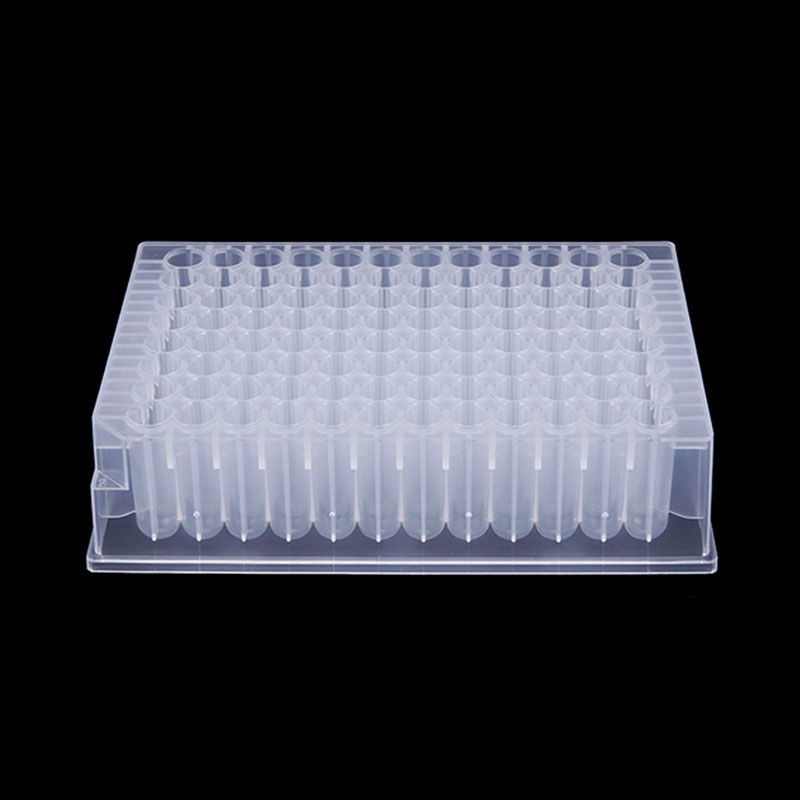Enhancing Functionality: Common Accessories for Deep Well Plates
2023-11-06
In the world of laboratory research, efficiency and precision are of paramount importance. Deep well plates, including the versatile 1.2ml round U-bottom design, are invaluable tools for various applications. To optimize their utility and performance, researchers often rely on a range of accessories specifically designed to complement these plates. In this blog, we will explore some common accessories that enhance the functionality of deep well plates and contribute to the success of laboratory operations.
The Role of Deep Well Plates
Deep well plates are renowned for their ability to store and process samples, reagents, and cultures efficiently. Their design, including multiple wells, makes them essential for high-throughput screening, sample storage, and various laboratory processes. To fully leverage their potential, researchers often turn to accessories that cater to specific needs.
Common Accessories for Deep Well Plates:
1. Sealing Films:
Sealing films, such as Parafilm, adhesive films, or aluminum seals, are essential accessories for deep well plates. These films create a secure barrier, preventing contamination and evaporation of samples or reagents. Proper sealing ensures sample integrity and experimental success.
2. Heat Sealer:
For heat-sealing films, a heat sealer is a crucial accessory. It enables the reliable sealing of deep well plates by melting and fusing the film onto the plate's edges. This method is commonly used for long-term storage and high-throughput applications.
3. Screw Caps:
Some deep well plates come with compatible screw caps, providing an airtight seal that ensures sample security and long-term storage. These caps are especially valuable for maintaining sterility and preventing contamination.
4. Silicone Mats and TPE Sealing Mats:
Silicone mats and thermoplastic elastomer (TPE) sealing mats are designed to create a secure and reusable sealing method for deep well plates. They provide an airtight barrier against contamination while allowing for easy access to the wells.
5. Storage Racks:
Storing and organizing multiple deep well plates can be challenging. Storage racks designed to hold these plates securely help maintain order and accessibility. These racks can be stackable, facilitating efficient use of laboratory space.
6. Lids and Lid Handling Accessories:
For deep well plates with loose lids or reusable lids, lid handling accessories like magnetized lids or specialized lid lifters simplify the process of accessing the wells and ensure sterility.
7. Centrifuge Adapters:
When processing samples or reagents in deep well plates within a centrifuge, specialized adapters are often used to secure the plates during the centrifugation process. These adapters prevent spills and ensure the plates remain in place.
8. Barcode Labels:
In high-throughput screening or sample management applications, barcode labels and readers are used to efficiently track and identify deep well plates. This ensures accuracy and traceability in large-scale experiments.
Key Considerations:
- Compatibility: Ensure that the chosen accessory is compatible with the specific deep well plate you are using. Different plates may require specific sealing films, heat-sealing equipment, or storage racks.
- Labeling: Properly label accessories and deep well plates to avoid confusion and ensure accurate identification of samples or experiments.
- Sample Handling: Consider how the accessories may impact the handling of samples and reagents. Some accessories may simplify workflows and enhance efficiency.
- Sterility: When using accessories for sealing or lid handling, maintain aseptic techniques to avoid introducing contaminants.
Conclusion
Deep well plates are versatile tools in the laboratory, and their functionality can be significantly enhanced with the use of specific accessories. Sealing films, heat sealers, storage racks, screw caps, and other accessories cater to various laboratory needs, ensuring the efficiency and accuracy of experiments and research. By carefully selecting and using these accessories, researchers can streamline processes, prevent contamination, and achieve the level of precision required for success in the dynamic field of laboratory science.



